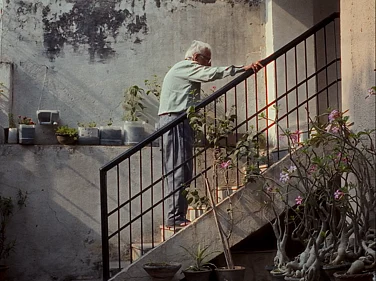He dreamt about the creative possibilities of sound in an era when Indians were waking up to the various dimensions of acoustics. P.M. Satheesh, Indian cinema’s go-to sound designer, creates soundscapes different from the reality of the shooting location, yet appropriate and anchored in the visual narrative. In an atmosphere of excesses—of sights and sounds inside our homes and outside it—Satheesh has the important job of sensitising the audience to the aesthetics of sounds. According to him, visuals are given to the audience and the sounds are taken by the audience. The sound is not in the film and the audience must connect with it.
Therefore, some sort of tuning is involved in preparing the audience through a fresh vocabulary of sound. “Once an active engagement is established, the mind is ready to explore this further, and the audience is launched into an exciting journey through this soundtrack that progresses along with the visual track through an interactive partnership,” says Satheesh. Visuals, according to him, represent the idea, while sounds fill up the audio part of the reality. But sound can play more than just a subservient role. It can be from within the bounds of the frame or outside of it. In most cases, the atmosphere is created by the sounds from outside the frame. For instance, if you watch a horror film with the sound switched off, it will be comic. The audience will laugh. “The important thing is about what sound does in a particular situation. The goal is to deliver the idea in an engaging and memorable experience for the audience.” The sound designer for the blockbuster Baahubali has a rich repertoire of independent films by the likes of Aparna Sen, Dev Benegal and Pankaj Rishikumar; animation films by Gitanjali Rao and Arnab Chowdhury; numerous documentaries such as Anand Pathwardhan’s Jai Bhim Comrade, War and Peace and Reason and Rakesh Sharma’s The Final Solution. Rishi Kumar’s Kumar Talkies won Satheesh the National Award for Best Sound Recording and Design in 1999. Malayalam films such as Puli Muruka, Kayamkulam Kochunni, Odiyan and Mamagam have made Satheesh a well-known name back home in Kerala. Satheesh, who set up the first sound design studio in India in 1998, started his career in Bollywood. Vishal Bharadwaj’s Saat Khoon Maaf and Kaminey, Reema Kagti’s Talaash, Abhishek Chaubey’s Ishqiya and Ketan Mehta’s Mangal Pandey are some of the films he did. He has also produced the sound for Mira Nair’s Hollywood flick The Reluctant Fundamentalist. Rao’s short films Girgit and True Love Story and her first feature-length animated film Bombay Rose have sound designed by Satheesh. Bombay Rose, a British–French co-production, was the inaugural film of Venice Critics Week and has been screened at over 40 international festivals. Satheesh grew up in rural Kerala, where he studied in a school which was close to the sea. “I think there was a quantity and variety of unadulterated natural sounds in the background of my childhood. The sounds of the tropical birds and the roar of the sea through seasonal variations were prominent features of this landscape. Natural sounds were punctuated by the whistles of the passing trains and the distant strains of the nadaswaram from a faraway temple. When I studied in FTII in Pune and worked in Bombay, the urban sounds became my acoustical environments.”
For him, the sound is a spiritual journey, a powerful tool that could create magic in the time and space of cinema that can deeply affect and influence the emotions of the audience.
(This appeared in the print edition as "The Sound & the Fury")


























